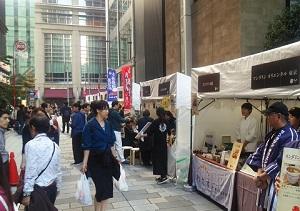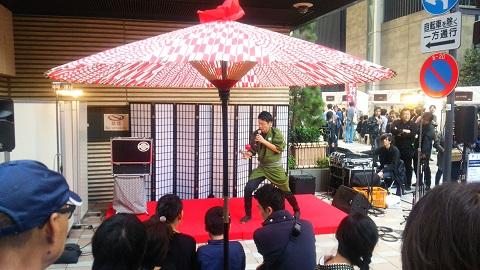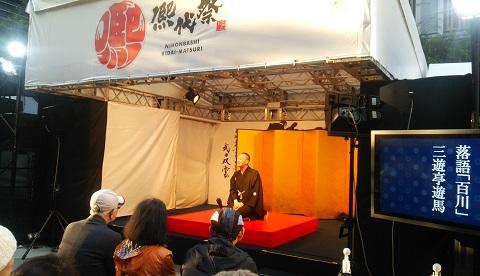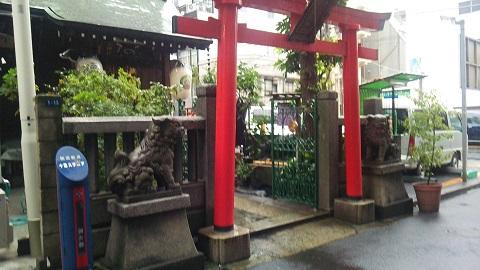From October 20 to November 7, the "Kidai Matsuri" was held around the choledo Muromachi and Fukutomi no Mori in Nihonbashi. This is the second time this year. By the way, it is difficult to write, but it is read as "Kidai Matsuri". I guess it was named from the picture scroll "Kidai Shoran" depicting the prosperity of Nihonbashi during the Edo period, which seems to be going to Tokyo Metro Mitsukoshimae Station. It seems that the meaning of "Kyodai Shoran" means "the scenery that is right away", and does it mean that the bustle has been reproduced in modern times?
At the venue, there are antenna shops in various places in Nihonbashi, comparing sake drinking, traditional performances such as Japanese musical instrument performances and kendama, blue sky classes of traditional techniques such as flower arrangement, water drawing, straw work, etc. I was happy to participate.
Under such circumstances, SARU has seen the rakugo "Hyakukawa" of Sanyutei Yuma teacher on a special stage. "Hyakukawa" is the name of a restaurant located in Nihonbashi Ukiyokoji, and is a classic rakugo that tells an interesting story about the turmoil that occurs when the customers of the fish shore misunderstood the national accent of the servant Hyakubei. The stage is in Nihonbashi and Ningyocho, but speaking of that, this is the revived Shin Ukiyokoji. It was a bit chilly and cheerful, but I had a good time to enjoy the arts and laughter.
It's a bit of a serene foot, but along the Hyakukawa.
It is Sanko Shindo that Hyakubei goes to use. Even now, Sanko Inari Shrine in Ningyocho is famous for losing cats. (Photo below) It seems that the Edo period was the beginning of the pet era, and it was not a cat samurai, but there were many lost cats.





